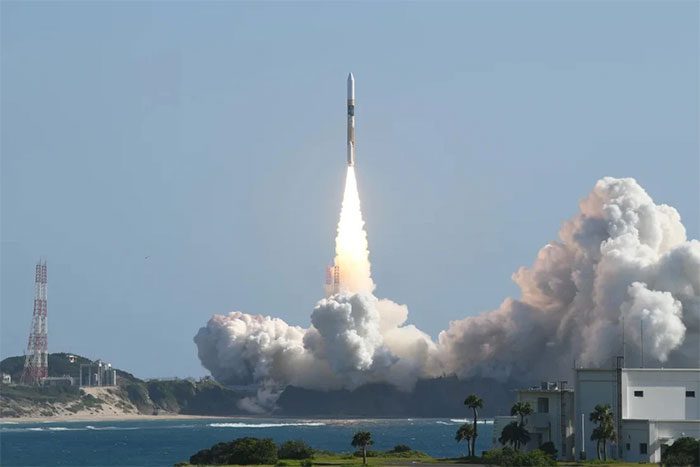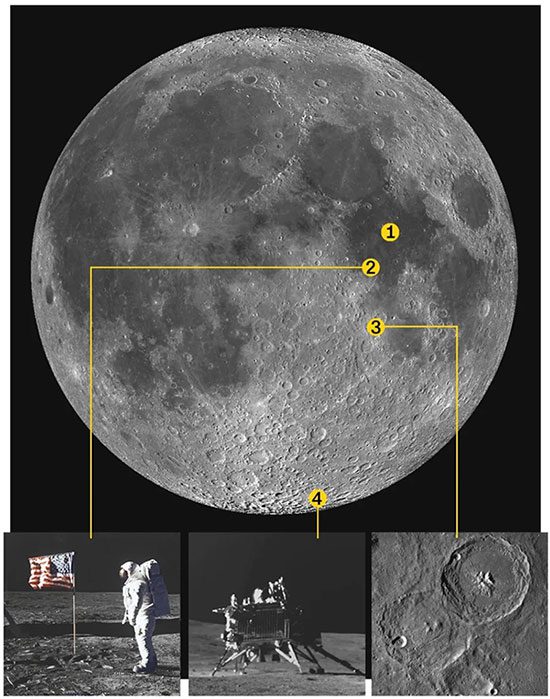If successful, Japan’s lunar lander SLIM will create a breakthrough in the race to conquer the Moon.
The Smart Lander for Investigating Moon (SLIM) from the Japan Aerospace Exploration Agency (JAXA) is expected to land on the lunar surface at 12:20 PM on January 20 (Japan time).
If successful, SLIM’s landing will mark Japan’s first robotic explorer on the Moon’s surface. This event will also make Japan the third country to achieve this feat in the 21st century and the fifth country to make a soft landing on the Moon since the Soviet Union’s Luna 9 mission in 1966.
Video simulating the landing process of the SLIM lunar lander on this celestial body.
SLIM features precise landing technology. The lander is scheduled to begin its descent to the Moon’s surface at 12 PM (Japan time). The landing process will be streamed live on YouTube in both Japanese and English.
Mr. Kenji Kushiki, a project manager for SLIM, stated: “The deceleration process until landing on the Moon’s surface (for SLIM) will be a 20-minute terrifying thrill.”
According to CNN, previous lunar landings achieved extremely high precision. However, SLIM’s technology marks a significant difference. This technology aims to establish a precise landing process for lightweight, low-cost robotic explorers, unlike previous types of probes.
JAXA noted that this technology could help small probes land even on rocky, hazardous terrain. They mentioned that if successful, this technology could enable future probes to “land on planets that are even more resource-scarce than the Moon.”
“Today, knowledge about astronomical objects has increased, and the details that need to be studied are becoming more specific. Therefore, high-precision landings close to research targets have become essential,” according to JAXA.
However, if SLIM does not land successfully on January 20, the lander will have to wait until February 16 to attempt another landing.
The Journey of SLIM
The SLIM lunar lander was launched in September 2023 alongside the XRISM satellite. Both are part of the X-ray Imaging and Spectroscopy Mission – a collaboration between JAXA and the National Aeronautics and Space Administration (NASA).
After launch, SLIM used its own propulsion system to head towards the Moon. It successfully entered lunar orbit at the end of December.
The lander’s probe features vision-based navigation technology, which JAXA refers to as “smart eyes.” SLIM will photograph the lunar surface as it approaches and quickly determine its location on a map previously outlined by satellites. From there, SLIM will automatically adjust its trajectory as it begins to land.

The SLIM lunar lander was launched in September 2023. (Photo: JAXA).
Mr. Kushiki mentioned that in the moments before landing, the SLIM lander will continuously be affected by the Moon’s gravitational pull. Therefore, this process requires the spacecraft’s engines to operate continuously.
If the lander successfully lands, it will quickly study the lunar surface just south of the landing site of Apollo 11, located in the Sea of Tranquility.
Unlike recent robotic missions targeting the Moon’s south pole, SLIM aims for a site near the Shioli crater, in the flat area of the Sea of Nectar. Here, SLIM will investigate the composition of rocks to help scientists explore the Moon’s origins.
According to JAXA, “A closer examination of such minerals could reveal information about the Moon’s internal structure and formation. However, landers often avoid approaching craters due to the difficulty of landing.”
The New Race to Conquer the Moon
The SLIM lunar mission takes place against a backdrop of multiple countries striving to explore this celestial body.
After the United States, the Soviet Union, and China, India became the fourth country to successfully land a spacecraft on the Moon. India’s Chandrayaan-3 lander touched down near the Moon’s south pole in August.

(1) Sea of Tranquility; (2) Apollo landing site; (3) Shioli crater targeted by SLIM; (4) Chandrayaan-3 landing site on the Moon. (Photo: CNN).
However, landing on the Moon’s surface is no easy feat.
In April 2023, the lunar lander Hakuto-R from the Japanese company Ispace crashed into the lunar surface during its landing attempt. In August 2023, the Luna-25 lunar lander also crashed while trying to land.
The current focus of the lunar conquest race is centered around the Moon’s south pole. Scientists suspect this area may contain water ice. This resource could be used to filter drinking water for future astronauts or even converted into rocket fuel.
The Moon’s south pole also has numerous craters and rocks, which can pose risks during landing. Future lunar missions need the ability to land in narrow areas to avoid these features.
However, SLIM is equipped with precise landing technology and has the potential to make breakthroughs in the lunar landing process. SLIM also features a lightweight design that may facilitate future space exploration plans.
JAXA believes that if SLIM successfully lands, it will enable landers to “transition from landing where we can to landing where we want.”


















































